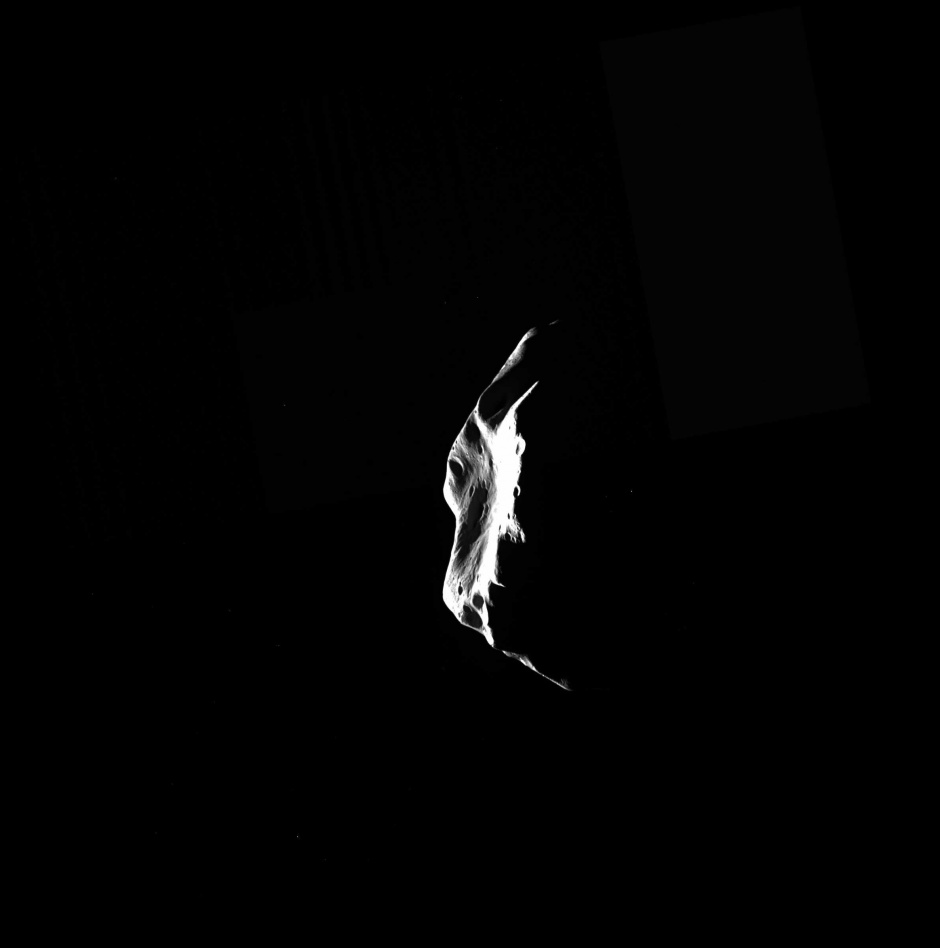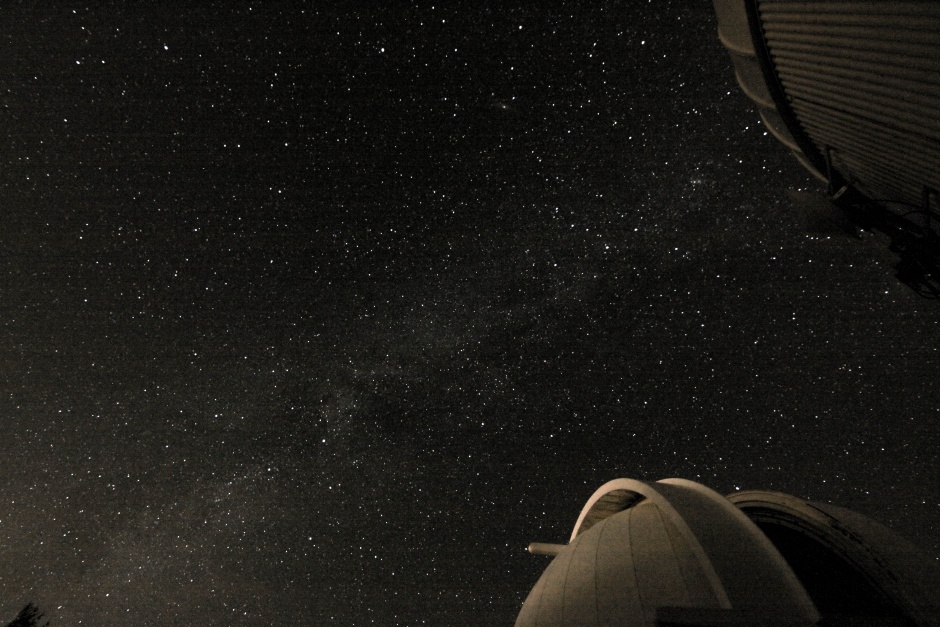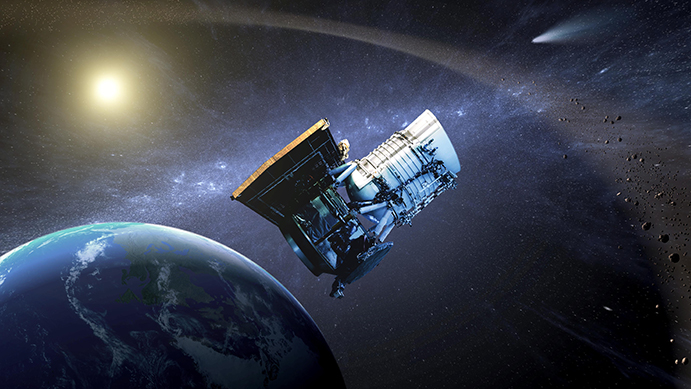For the inhabitants of the Russian city of Chelyabinsk, the events of 15 February 2013 will never be forgotten.
Just after nine o’clock in the morning, as commuters made their way to work along the city’s snow-covered roads, and schoolchildren settled down for their lessons, a 20 metre diameter meteorite - travelling at an estimated 12 miles per second - exploded above the city with a force equivalent to 30 Hiroshima bombs.
Amazingly, no one was killed. But the resulting shockwave and shower of cosmic debris wreaked havoc over a wide area: damaging thousands of buildings, putting around 1600 people in hospital and drawing international attention to a risk that astronomers, scientists and Hollywood film-makers have been nervously contemplating for decades.
Every year, around 40,000 tonnes of space rock falls to the earth. This is mostly in the form of dust and small meteorites but occasionally something more substantial will enter our atmosphere. The Chelyabinsk meteor was thought to be the largest object of its kind since the so-called 1908 Tunguska event, when an asteroid of around 40m diameter devastated a 2000km2 area of remote Siberian forest.
Further back in our planet’s history, the impact of large asteroids is thought to have influenced the evolutionary course of life on earth by, for instance, triggering the extinction of the dinosaurs.
Today, astronomers estimate that around 1,600 potentially hazardous so-called near-Earth objects (NEOs) are out there. And while the prospect of an enormous asteroid sending us the same way as the dinosaurs is exceptionally remote (see table) experts argue that we cannot afford to ignore the hazard posed by smaller objects.
As head of planetary protection at NASA, Lindley Johnson is better placed than most to comment on this threat. The veteran air force pilot even has an asteroid named after him in recognition of his NEO detection efforts.

“A significant impact is extremely rare, maybe a once-in-a-century kind of event,” he told The Engineer, “but the Earth gets hit every day by small stuff and it’s just a matter of time before it gets hit by something bigger.”
An object the size of the asteroid that struck Tunguska, which we can expect on average every 100 years, would, he said, have the potential to cause huge devastation. Indeed, had the Tunguska asteroid’s trajectory been just slightly different, it might have altered the course of the 20th century. Indeed, had the Tunguska asteroid’s trajectory been ever so slightly different, it might well have altered the course of the 20th Century. “Luckily Tunguska was a remote area,” said Johnson. “But had it impacted three hours later that would have been about the position where Moscow is and it would have been a different story.”
A smaller kind of threat
It’s not just Tunguska-sized objects that have the potential to cause carnage. According to leading European NEO expert Prof Massimiliano Vasile of Strathclyde University, smaller asteroids such as the one at Chelyabinsk, whose type hits the Earth more regularly, can also pose a threat.
“We’ve had close approaches with objects of that size maybe three or four times in the past two years,” he said. “They are still capable of causing significant damage, largely because of the velocity with which they impact.”
The good news is that, across the world, engineers and scientists are developing and deploying a host of technical solutions aimed at spotting, tracking and even deflecting asteroids that could be on a collision course with our planet.

Detection techniques
Today, the main tools for detecting asteroids are Hawaii’s PanSTARRS (Panoramic Survey Telescope and Rapid Response System) telescope and the NASA-funded Catalina Sky Survey (CSS), which uses three telescopes based in Arizona’s Santa Catalina mountains. Between them, these facilities are responsible for almost 90 per cent of discoveries and identify around 1,800 objects every year.
Additional information is gathered by deep space radar systems at Arecibo in Puerta Rico and at the Goldstone complex in the Mojave desert. These facilities are used to measure the size, shape and orbital path of asteroids.
However, while we can take some reassurance from the fact that the skies are more closely monitored than at any point in human history, there are concerns that existing techniques don’t pick up everything.
“Above 140m, we have improved our knowledge a lot... but the fraction of objects we know about below 100m is small,” said Vasile.
NASA’s Johnson added that, although scientists were making the best possible use of current capabilities, other technologies – such as space-based infrared telescopes – would potentially be much more effective.

“Because these objects absorb sunlight and re-radiate it as heat, an infrared telescope in space would be especially sensitive to detecting them,” he said.
NASA is already enjoying some benefits of this technology through its NEOWISE project, which has taken an IR surveying telescope originally used for scientific missions and repurposed it to hunt for asteroids.
“One of the greatest things it does for us is allow a more accurate estimation of size,” said Johnson. This is because the heat radiated by the object is a better indicator of size than the brightness-based estimates that are typically used.
NEOWISE has already operated past its planned lifetime and engineers believe it has now moved into an orbit where it is exposed to too much sunlight to function correctly. The agency is now working on the development of a new telescope, NEOCam, specifically designed to look for hazardous asteroids in the regions of space closest to the Earth’s orbit.
Meanwhile, engineers at the European Space Agency (ESA) are taking a different approach to the detection problem – building a terrestrial telescope that they claim will be able to scan the heavens more thoroughly than ever. Taking its inspiration from the compound eye of the fly, the so-called Fly Eye telescope will use 16 separate lenses to take multiple images of the sky in different directions. Instead of finding and following objects at high resolution, the new technology will capture several lower-quality images that cover a wider area of the sky, enabling it to automatically detect movement and alert astronomers when there is an NEO worth investigating.

“The Fly Eye telescope will have a larger field of view that allows a complete scan of the night sky,” said Dr Rüdiger Jehn, co-manager of ESA’s NEO detection activities. “No asteroids coming from these directions will be missed,” he added.
Countering the threat
So what should we do if we discover an asteroid on a collision course with our planet? The most heavily researched option, and the one generally considered to hold the most promise, is the use of a kinetic impactor: a spacecraft that would deliberately crash into an asteroid at high velocity in an effort to alter its trajectory.
You need to slow down the object by one or two centimetres per second
Clearly, the effect of the impact would vary depending on the size of the asteroid. But even the tiniest effect could be enough, said Johnson: “You need to slow down the object by one or two centimetres per second. If you do this several years in advance, that is enough to cause it to miss the Earth because the difference in velocity builds up over time.”
The most advanced project in this area is NASA’s proposed DART (Double Asteroid Redirection Test) mission, which recently moved from concept stage to a preliminary design phase. The agency hopes to crash a spacecraft into Didymos B, one of a pair of binary asteroids in near-Earth orbit. Following this encounter, which is expected to take place in 2022, a combination of Earth- and space-based monitoring techniques will measure changes to the object’s orbit.
Here in Europe, the Airbus Defence and Space-led NEOShield project is also studying the potential of kinetic impactors. The group’s recently proposed NEOTwist project hopes to crash an impactor into an asteroid and then use a small observation module to measure changes to its path through space.

Airbus engineer Emanuele Monchieri told The Engineer that a big challenge of this project was ensuring that the asteroid was struck in exactly the right place, and his group has been working on the guidance, navigation and control systems required. He added that a key factor in determining the best impact site was finding out as much as possible about the asteroid’s composition, and there was a lot of interest in developing the technology necessary for taking samples of asteroids and returning them to Earth for analysis.
A greater understanding of an asteroid’s composition could have a major influence on the technique used to deflect it, added Strathclyde’s Vasile. “The amount of regolith changes how much you can deflect,” he said. “If you shoot a bullet into sand or solid rock, you see different effects.”
Beyond the use of impactors, researchers are considering a range of less dramatic, so-called low-push approaches that could be used to exert a more subtle effect on an asteroid’s trajectory. One of the most promising techniques is the use of a ‘gravity tractor’: a spacecraft that will fly alongside the asteroid for a period and exert a gravitational effect on it.
“If you have enough time and the object is small enough [100–200m diameter], a gravity tractor could be effective,” said Johnson. “One of the advantages is you can more precisely control how much velocity change you give the asteroid.”
Vasile’s team has been exploring an alternative low push technique in which a spacecraft flies alongside an asteroid, and uses lasers to heat its surface: generating a plume of gas and debris that gives the asteroid a subtle push. The group has used laboratory simulations to explore the technique’s potential for a range of different sized objects. “We investigated with asteroids as big as 20m diameter and for those asteroids we had to go upto eight years warming time whilst for smaller asteroids you can go down to 2 years,” he said.
Other options that have been considered include attaching a low impulse rocket to the asteroid itself, or placing an automated “mass ejector” system on the surface of the asteroid that would extract mass from the rock and eject it into space, again giving the object a steady push into a different orbit.
However, in some circumstances a steady push - or even a kinetic impactor - might not be good enough. “If you have 100 years you could use pretty much any deflection technique that been conceived in the past 2 decades,” said Johnson, “but if you have only one year there aren’t many options.”
This is where the technique of last resort comes in: the use of nuclear weapons.
Here there are two main options under consideration: either a nuclear charge is detonated at a certain distance from the object (causing a flow of radiation that will vaporise the asteroid’s surface and push it into a different orbit); or we take the same approach used by Bruce Willis in the film Armageddon by burying a giant bomb beneath the surface and blasting the asteroid to smithereens.
Both are dramatic options, that are difficult to control and which would have unpredictable consequences. But faced with impending disaster, most experts agree that this option would represent our best hope.
While none of these deflection techniques have been directly trialled beyond the lab, there is reasonable confidence in their success thanks in part to the way in which previous scientific missions have cracked related challenges. For example, NASA’s Deep Impact mission, in which Johnson was involved, successfully crashed an impactor into a comet back in 2005.
The aim of this project was to learn more about the comet’s composition by analysing the resulting plume. The Rosetta mission, which led to the first successful landing on a comet, has also helped push the development of some key technologies.

There’s even a precedent for sample return, thanks to Japan’s Hayabusa mission, which successfully returned a sample of a NEO back to Earth in 2010.
Another area that could help stimulate the development of the technology is the space sector’s growing interest in tapping into the resources that can be found in comets and asteroids. Glasgow University’s Prof Colin McInnes is one of the leading experts in this field. “Using water for human space flight you’ve still got to lift water out of the air speed gravity well at great expense - if you can bake it out of asteroids in principal you could use solar energy to crack that into hydrogen and oxygen so you’ve got propellants in situ.” Mcinnes said that to do this would require engineers to solve technical challenges that could also be applied to asteroid deflection.
An impact with an asteroid is a typical situation in which a politician is not really compelled to invest – because it’s a rare event that is longer term than their career
Nevertheless, whilst the concepts are well studied and some of the technical solutions have been demonstrated, most NEO experts agree that we badly need a dedicated mission to put the theory into practice. “The technology is mature but it hasn’t been demonstrated that it would be effective in diverting an asteroid,” said Johnson. “On paper they’re well understood but I wouldn’t want to have to rely on any one of these systems until we’ve actually had a chance to test them.”
As with so many engineering challenges it seems that the biggest hurdle might ultimately be political. “None of the solutions we have are that far off from being ready to launch,” said Vasile. “The problem is always that you are talking about several millions of pounds of investment. And convincing people to invest that to test something like this is difficult. An impact with an asteroid is a typical situation in which a politician is not really compelled to invest – because it’s a rare event that is longer term than their career.” Johnson agreed: “It’s something that takes a very long planning horizon to understand and realise the kind of capabilities that are needed.”
The development of any solution will also require joined-up international collaboration. “It’s not something that a single country can or should deal with,” said Vasile. “For example – say there is an incoming asteroid and the US decides it has enough resources to deflect. They launch a mission, the mission goes wrong, they simply move it a little bit and instead of impacting on the ocean it falls on China. That’s something you don’t want to happen.”





First seven members join NG’s Great Grid Partnership
So in addition to (as seems likely) Great British Energy & Great British Railways we also have the Great Grid Upgrade To me, this rather … grates?